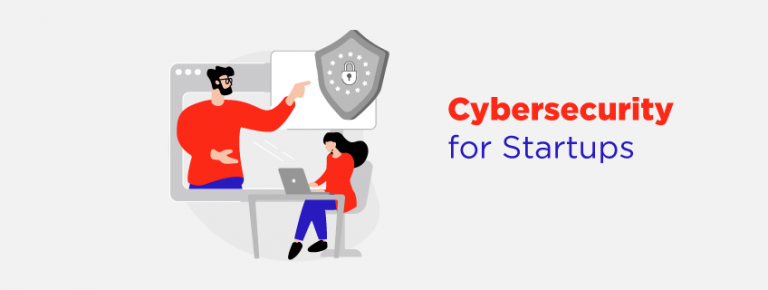Every business today depends on some form of technology, from a simple website to a complex network infrastructure. With this reliance on technology comes an increased risk of a cyber-attack, making cyber security risk assessment steps an essential part of any modern business strategy.
At Upper Echelon Technology Group, we understand that cybersecurity is not just about managing tech issues—it’s about protecting your business goals and profits. As a managed services provider focused on cybersecurity, we treat your technological assets as integral parts of your business, locating potential vulnerabilities and fortifying them against attacks.
Why does this matter? A well-conducted risk assessment not only protects your company from costly data breaches but also helps avoid a regulatory minefield. It ensures that everyone in the organization understands how cybersecurity risks can impact the company’s objectives, creating a culture sensitive to these risks.
To keep it simple, performing a cybersecurity risk assessment can be broken down into five key steps: Scoping the assessment, identifying and analyzing risks, evaluating and prioritizing risks, risk treatment and mitigation strategies, and finally, documenting and reporting risks.
As you examine these steps more closely in the following sections, you’ll become more equipped to protect your business and leverage your technology assets effectively. For a big picture overview, don’t hesitate to visit our cyber security risk assessments page. Implementing these steps strategically and methodically can make your company more secure, efficient, and profitable. So, let’s dive in.
Understanding Cybersecurity Risk Assessment: Definition and Purpose
The cybersecurity landscape is fraught with threats and vulnerabilities that can disrupt your business operations and lead to substantial financial and reputational losses. In the face of such risks, a cybersecurity risk assessment is not just an option—it’s a necessity.
A cybersecurity risk assessment is a systematic process that helps you identify your organization’s most significant information technology assets, recognize potential threats and vulnerabilities, and evaluate the impact and likelihood of these threats materializing. This process is fundamental in creating a robust cybersecurity strategy that safeguards your business from cyber threats.
The primary purpose of conducting a cybersecurity risk assessment is to help you prioritize the risks that could have the most significant impact on your business. It assists you in making informed decisions about where to invest your resources to mitigate these risks effectively. This risk assessment process is not a one-time event; it’s an ongoing practice that needs to be repeated regularly to keep up with the evolving cybersecurity landscape.
Before we delve into the specific cyber security risk assessment steps, it’s important to understand that the assessment is not just about identifying risks. It’s also about understanding how these risks can impact your business objectives and creating a more risk-aware culture within your organization. This involves everyone in the organization, from executives to employees, playing their part in maintaining cybersecurity.
At Upper Echelon Technology Group, we not only help you resolve your technology issues, but we also assist you in leveraging your technology assets in the best ways possible to enhance your business. Part of that service includes guiding you through the cybersecurity risk assessment process. We’re here to ensure that your business remains secure, efficient, and profitable in the face of ever-evolving cyber threats.
In the upcoming sections, we’ll take you through the five main steps of a cybersecurity risk assessment: scoping, risk identification, risk analysis, risk evaluation, and documentation. For further information on this topic, visit our other subtopic pages such as assessing cybersecurity risk, business cybersecurity assessment, and cyber risk analysis.
Step 1: Scoping the Cybersecurity Risk Assessment
When it comes to cyber security risk assessment steps, the first step is to scope out the assessment. This is a critical process of determining the boundaries and focus areas of the assessment.
Determining the Scope of the Assessment
The scope of a cybersecurity risk assessment could encompass the entire organization, but often, it’s more feasible to focus on a particular business unit, location, or specific aspect of the business. For example, you might focus on payment processing or a web application.
At Upper Echelon Technology Group, we understand the importance of having all stakeholders onboard. As such, we ensure that we have the full support of everyone whose activities fall within the scope of the assessment. Input from these individuals is vital in understanding the most important assets and processes, identifying risks, assessing impacts, and defining risk tolerance levels.
To make sure everyone is on the same page, we also ensure that all involved are familiar with the terminology used in a risk assessment such as likelihood and impact. Our team utilizes resources like ISO/IEC TS 27100 which provides a useful overview of cybersecurity concepts.
Identifying the Assets within the Scope
Once the scope is determined, the next step is to identify and inventory all physical and logical assets that fall within it. This is crucial because, as the old adage goes, “you can’t protect what you don’t know.”
When identifying assets, we pay special attention to the ‘crown jewels’ of your organization—these are the assets that are critical to your business and likely the main target of attackers. However, we also consider assets that attackers would want to control, like an Active Directory server or communication systems, which could be used as pivot points to expand an attack.
At Upper Echelon Technology Group, we don’t just identify these assets; we also create a network architecture diagram from the asset inventory list. This diagram helps visualize the interconnectivity and communication paths between assets and processes, as well as entry points into the network, making the task of identifying threats easier.
By following these cyber security risk assessment steps, we can better understand your organization’s vulnerabilities and take the necessary actions to prevent and mitigate cybersecurity risks.
To learn more about how we manage these steps, visit our subtopic pages such as cyber risk analysis and cyber security risk assessment companies.
Step 2: Identifying and Analyzing Risks
After defining the scope of the assessment in Step 1, the next step in our cybersecurity risk assessment steps is identifying and analyzing the risks that could potentially impact your business.
Identifying Threats using Threat Libraries and Resources
The first part of this step involves identifying the threats that your organization is exposed to. To do this, we use threat libraries like the MITRE ATT&CK Knowledge Base and resources from the Cyber Threat Alliance. These resources provide high-quality and up-to-date cyber threat information, helping us identify potential threats to each of your assets.
Not only do we pay attention to assets critical to your business operations, but we also focus on assets that attackers would want to control, such as an Active Directory server or communication systems. These could be used as pivot points to expand an attack.
Analyzing the Potential Impact of Threats on the Organization
Once we’ve identified the threats, it’s time to analyze the impact these could have on your business. We consider what could go wrong if a threat exploits a vulnerability in your system. For example, an attacker performing an SQL injection on an unpatched web server could lead to customers’ private data being stolen, resulting in regulatory fines and damage to your reputation.
We summarize this information in simple scenarios to make it easier for you to understand the risks you face in relation to your key business objectives. It also helps us in identifying appropriate measures and best practices to address the risk.
By identifying and analyzing the risks, we can formulate a robust action plan to protect your business from cyber threats. Remember, the goal isn’t just to fix tech issues; it’s about leveraging your technology assets in the best way possible to safeguard your business.
Want to learn more about how we handle threats and potential risks? Visit our cyber threat risk assessment page.
To understand how we analyze risks, check out our cyber risk analysis page.
In the next section, we’ll be discussing how we evaluate and prioritize these risks as part of the cybersecurity risk assessment steps, so stay tuned.
Step 3: Evaluating and Prioritizing Risks
After identifying threats and analyzing their potential impact on your organization, the next step in the cybersecurity risk assessment process is to evaluate the likelihood of these risk scenarios and prioritize them based on their likelihood and potential impact.
Evaluating the Likelihood of Risk Scenarios
At Upper Echelon Technology Group, we consider a variety of factors when determining the likelihood that a particular threat could exploit a vulnerability. These factors include the discoverability of the security weakness, the ease of exploitability, reproducibility of threats, the prevalence of the threat in the industry or similar companies, and historical security incidents .
For instance, a cyber threat that is easy to discover and exploit would be considered more likely than a threat that requires advanced technical skills to exploit. Similarly, threats that have previously affected your organization or others in your industry are considered more likely than threats that are rare or unheard of.
Prioritizing Risks Based on Likelihood and Impact
Once we’ve evaluated the likelihood of each risk scenario, we prioritize them based on their potential impact on the organization. This involves creating a risk matrix to classify each scenario and define a risk tolerance ratio. It’s crucial to specify which threat scenarios exceed this threshold and therefore require immediate attention.
Based on the risk matrix, we typically recommend one of three actions: Avoid, Transfer, or Mitigate. If the risk is low and it’s not worthwhile to mitigate it, we might advise you to simply avoid it. If the risk is significant but difficult to address, we might recommend transferring the risk by taking out cyber insurance or contracting an outsourced security service. And for risks that are significant and within the operational scope of your internal team, we’ll recommend mitigation strategies, such as deploying security controls to reduce their occurrence and potential impact .
However, it’s important to note that no risk assessment can completely eliminate all risks. There will always be a certain level of residual risk that either can’t be addressed or is missed during the assessment process. This residual risk must be formally accepted as part of your organization’s cybersecurity strategy.
In the next section of our cyber security risk assessments overview, we’ll delve into risk treatment and mitigation strategies. As a cybersecurity-focused managed services provider, we don’t just identify tech issues – we help you leverage your technology assets in the best way possible to secure your business.
Step 4: Risk Treatment and Mitigation Strategies
With the identification, assessment, and prioritization of cybersecurity risks out of the way, the next step in the cyber security risk assessment steps is the treatment and mitigation of these risks. At this stage, we use our expertise to help you decide the most effective way to handle each risk.
Understanding Risk Treatment Options: Acceptance, Avoidance, Transfer, and Mitigation
When it comes to treating cybersecurity risks, there are four common options that we consider:
-
Acceptance: This option is chosen when the risk to the organization is considered minimal or when further mitigation options are not available. It’s important, though, to reassess accepted risks periodically to ensure the associated risk level has not increased beyond acceptable levels.
-
Avoidance: When the activity causing the risk is not essential to your business function, it can be stopped outright. This eliminates the risk.
-
Transfer: Risks can be transferred to third parties with the ability to reduce the risk to your organization. Like accepted risks, these should be reassessed periodically to ensure that the associated risk level with the third party has not increased beyond acceptable levels.
-
Mitigation: When we determine that steps can be taken to reduce the risk to your organization, we work with you to implement mitigating controls. After implementing these plans, it’s important to reassess the risks to ensure an acceptable reduction in the level of risk.
These strategies are not one-size-fits-all. We work closely with you to understand your business needs and choose the option that best reduces or eliminates the risk to your organization.
Dealing with Residual Risk in Cybersecurity Strategy
In handling cybersecurity risks, it’s important to remember that there will always be a level of residual risk – risks that are either missed or not fully addressed. This is a reality in any cybersecurity strategy. But don’t worry, at Upper Echelon Technology Group, we help you understand and formally accept these risks as part of your cybersecurity strategy.
By following these cyber security risk assessment steps, we help you build a robust cybersecurity strategy that not only addresses your current risks but also prepares you for future ones. Our personalized approach to IT Managed Services ensures that we go beyond fixing tech issues – we focus on your business needs and how you can leverage your technology assets in the best way possible to secure your business.
In the next section of our cyber security risk assessments overview, we’ll discuss the importance of documenting and reporting risks. Stay tuned to learn how we ensure complete transparency in managing your cybersecurity risks.
Step 5: Documenting and Reporting Risks
Documenting Identified Risks in a Risk Register
After identifying, analyzing, and prioritizing risks, the next step in our cyber security risk assessment steps is documenting all these risks in a risk register. The risk register serves as a centralized repository for all your cybersecurity risks. It’s a handy tool that helps us keep track of all risk scenarios and their corresponding mitigation measures. Here’s what we include in the risk register:
- Risk scenario
- Date of identification
- Current security controls
- Current risk level
- Treatment plan and timeline
- Progress status of implementing the treatment plan
- Residual risk post implementing the treatment plan
- Risk owner
The risk register is not a one-time document. We continuously review and update it to ensure that we always have an accurate account of your cybersecurity risk landscape.
We understand that cybersecurity risk assessment is a large and ongoing undertaking, so we dedicate time and resources to ensure it improves your organization’s future security.
Reporting Cybersecurity Risks to Stakeholders
Transparency is a crucial component of our cyber security risk assessment steps. We believe in keeping you in the loop about the risks to your organization and our plans to reduce those risks. Regular and meaningful reporting is one of the best ways to ensure your awareness and participation in managing cybersecurity risks.
Our reports include a detailed description of the risk, vulnerabilities, impact, and likelihood of occurrence along with control recommendations. This supports you in making informed decisions about budgets, policies, and procedures related to cybersecurity.
Whether you’re looking to ensure cybersecurity when your employees work remotely, address cybersecurity challenges in 2021, or build a cybersecurity culture in your company, we’re here to help. If you’re interested in learning more about our approach to cybersecurity risk assessments, we would love to have a conversation with you.
In the next section of our cyber security risk assessments overview, we will delve into the role of cybersecurity frameworks in risk assessment. We will talk about how different frameworks can guide the risk assessment process and help you align with compliance requirements. Stay tuned!
The Role of Cybersecurity Frameworks in Risk Assessment
When considering cyber security risk assessment steps, it’s important to remember that we’re not alone in this journey. There are many cybersecurity frameworks out there that can provide guidance and structure to the risk assessment process. These frameworks have been developed by experts and are backed by industry best practices. Understanding these frameworks and their requirements is a crucial step in conducting a comprehensive cyber security risk assessment.
Understanding Different Cybersecurity Frameworks and Their Requirements
There are several well-known frameworks like SOC 2, ISO 27001, PCI 4.0, and NIST CSF that we can use as a starting point. Each of these frameworks has specific requirements for risk management and can provide a roadmap for conducting risk assessments. For example, SOC 2 requires organizations to consider risk tolerance in their operations and include potential fraud risks in their assessments.
However, bear in mind that each framework has its own unique focus and perspective on risk management. Some frameworks may be more rigorous than others, requiring a more detailed and extensive risk assessment process. Understanding the specific requirements of each framework can help us determine which one aligns best with our organization’s needs and objectives.
Aligning Risk Assessment with Compliance Requirements
Compliance with cybersecurity frameworks is not just about ticking boxes. It’s about aligning our risk management practices with industry standards to create a robust and effective cybersecurity strategy. But aligning risk assessment with compliance requirements can often seem like a daunting task. This is where we, at the Upper Echelon Technology Group, can help.
We understand that each business is unique and that a one-size-fits-all approach to cybersecurity does not work. That’s why we offer personalized IT Managed Services, helping businesses leverage their technology assets in the most effective way to meet their specific compliance requirements.
Whether you are looking to comply with SOC 2, ISO 27001, PCI 4.0, NIST CSF, or another framework, we can guide you through the process. Our approach involves identifying the specific requirements of the applicable framework, conducting a comprehensive risk assessment, and implementing a risk management program tailored to your business’s needs.
In the end, the goal is to ensure that your organization is not only compliant with relevant regulations but also has a robust and effective cybersecurity strategy in place. As we move on to the next section of our cyber security risk assessments guide, remember that understanding and aligning with cybersecurity frameworks is a key step in this journey.
And remember, we’re here to help. If you have any questions or need support with your cybersecurity risk assessment, don’t hesitate to reach out to us.
The Ongoing Nature of Cybersecurity Risk Assessment
In the ever-evolving landscape of cybersecurity, one-time assessments are not enough. Cybersecurity risk assessment isn’t a one-off task. It’s an ongoing process that should become an integral part of your business operations. Let’s delve deeper into why regular risk assessments are necessary and how to adapt your assessments to new threats and systems.
The Need for Regular Risk Assessments
The world of threats and vulnerabilities is constantly changing. New risks emerge, old risks evolve, technologies advance, and business operations adapt. This means your risk landscape is continually shifting. Regularly scheduled cyber security risk assessments allow us to keep up with these changes and ensure that your business remains resilient.
At Upper Echelon Technology Group, we understand that your business is dynamic, and so are the cyber threats it faces. That’s why we don’t just “fix tech issues.” We focus on your overall business needs and how to leverage your technology assets in the best way possible.
Regular assessments are crucial to identifying new vulnerabilities, validating existing security controls, and ensuring that your risk management strategies are still effective. They keep us informed about the state of your cybersecurity and allow us to make informed decisions about resource allocation and strategic planning.
Adapting Risk Assessment to New Threats and Systems
Adapting your cyber security risk assessment steps to the latest threats and systems is a vital aspect of maintaining robust cybersecurity. As new systems are introduced or existing ones are upgraded, they must be incorporated into your risk assessments.
Similarly, as new threats emerge, your assessments should be updated to include these risks. Incorporating threat intelligence and staying abreast of the latest cybersecurity trends can significantly enhance your risk assessment process.
At Upper Echelon, our approach to IT Managed Services is personalized. We continuously adapt and tailor our services, including risk assessments, to suit your unique business needs and the changing cyber threat landscape. We make your team more efficient by leveraging technology and identifying areas where technology can improve your bottom line.
In conclusion, maintaining a strong cybersecurity posture requires an ongoing commitment to risk assessment. This means regular assessments and constant adaptation to new threats and systems. And remember, we’re here to help. If you need support with your ongoing cybersecurity risk assessments, don’t hesitate to contact us.
Conclusion: The Value of a Comprehensive Cybersecurity Risk Assessment
After going through various cyber security risk assessment steps, it’s clear that conducting a comprehensive cybersecurity risk assessment is a crucial part of any organization’s overall security strategy. Assessing risks, evaluating their potential impact, and implementing effective risk treatment strategies are all necessary to keep your organization safe from cyber threats.
It’s important to remember that cybersecurity is not a one-time task, but an ongoing process. This process requires constant vigilance, as threats continue to evolve and new vulnerabilities emerge. Regular risk assessments should be conducted to identify new threats and reassess the impact of existing ones. This ongoing commitment to cybersecurity risk assessment is what will ultimately strengthen your organization’s resilience to cyber threats.
By identifying your assets, understanding their value, and evaluating the threats they face, you can make informed decisions about where to allocate resources for risk mitigation. Identifying the most likely and impactful risks helps prioritize your organization’s cybersecurity efforts, ensuring the most critical areas are protected first.
But conducting a comprehensive cybersecurity risk assessment isn’t just about protection. It’s also about enabling your business to operate more efficiently and profitably. As we at Upper Echelon Technology Group stress, understanding your cybersecurity risks can help you better leverage your technology assets, leading to improved business performance.
Moreover, a comprehensive cybersecurity risk assessment can help prevent costly incidents and regulatory non-compliance issues. It can also foster a more risk-aware culture within your organization, leading to better overall decision-making.
Finally, remember that you don’t have to go through this complex process alone. At Upper Echelon Technology Group, we specialize in providing personalized IT Managed Services. We can help you navigate the complexities of cybersecurity risk assessment and ensure that your organization is well-protected against potential threats.
So, if you’re ready to unlock the untapped potential of a comprehensive cybersecurity risk assessment, we’d love to hear from you. Together, we can ensure your organization’s cybersecurity efforts are as effective and efficient as possible.






